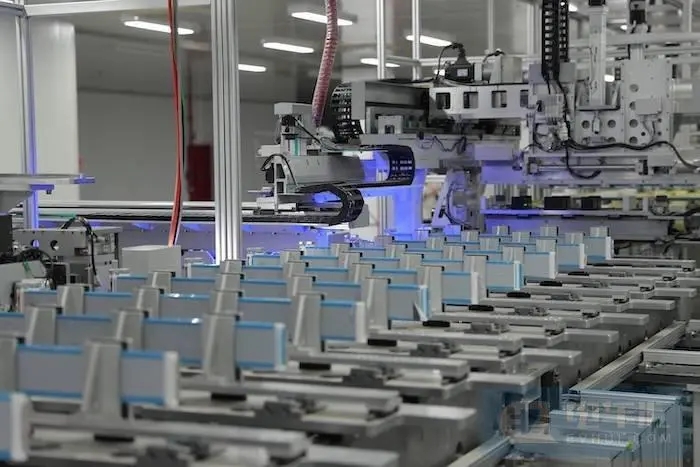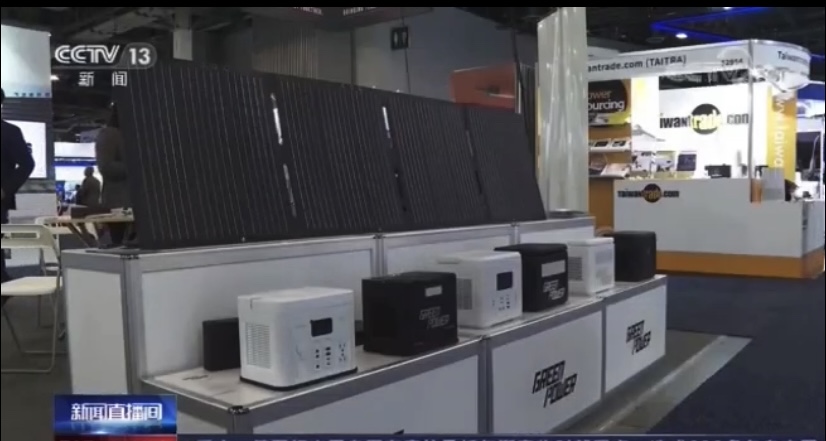In our daily lives, we rely heavily on electronic devices such as smartphones, PCs, and cameras. However, when engaging in outdoor activities, these devices' batteries often run out quickly, impacting our overall experience in a negative way. To address this issue, outdoor power supplies were developed. Currently, outdoor power supplies mainly include fuel generators, lead-acid batteries, solar photovoltaic panels, and portable lithium outdoor power supplies.
Types of Outdoor Power Supplies
Traditional Fuel Generators
Fuel generators are power devices that use fuel combustion to generate electricity, boasting high energy conversion rates and high thermal efficiency. They can provide a large amount of power supply to electronic devices, making them suitable for use in the wilderness. The advantage of fuel generators is their high output power, reliability, and long usage time. However, it's worth noting that they generate excessive noise and discharge large amounts of waste, which contradicts modern eco-friendly concepts.
Lead-Acid Batteries
Lead-acid batteries are cost-effective and have a long service life. However, they also cause severe environmental pollution problems similar to traditional fuel generators.

Solar Photovoltaic Panels
Solar panels convert sunlight directly into electrical energy, making them an environmentally friendly and convenient outdoor charging method, especially in areas with abundant sunshine. However, they cannot store electrical energy.
Portable Lithium Outdoor Power Supplies
Portable lithium outdoor power supplies are small and lightweight power devices that typically use built-in high-density lithium-ion batteries to provide stable AC/DC power. They can be combined with solar panels, incorporating electricity generation and storage into one unit. They are safe, portable, stable, and eco-friendly, making them ideal for charging our conventional electronic products and household appliances. They are particularly suitable for short trips, camping, hiking, and other outdoor activities. Compared to traditional diesel generators and lead-acid batteries, portable lithium storage power supplies are lightweight, easy to use, low-noise, and high-capacity. As raw material prices gradually decrease, portable energy storage prices are also gradually decreasing, making them irreplaceable compared to traditional outdoor power supplies. As a result, outdoor energy storage devices have exploded in popularity.
Currently, the market's product capacity is mainly divided into three ranges: 100-500Wh, 500-1000Wh, and over 1000Wh, with output power ranging from 100-2200W. They come equipped with a variety of interfaces, including AC, DC, Type-C, USB, and PD, making them compatible with various mainstream electronic devices on the market.
Main Application Scenarios: Multi-scenario Applications, Mainly Focused on "Outdoors" and "Emergencies"
Outdoor energy storage devices have diverse application scenarios. Due to their portable characteristics, portable energy storage devices have various application scenarios. They are mainly used for outdoor activities and emergency rescue operations, as well as in film and television production, aquaculture, outdoor farming, outdoor operations, and stall operations.

Production and Sales
The production and manufacturing end are mainly located in China. According to the "Research Report on the Development of China's Portable Energy Storage Industry (2021)" published by the China Chemical and Physical Power Industry Association, China accounts for over 90% of production and shipment and is the main shipment destination for global portable energy storage devices. The United States and Japan, as the world's largest application markets, have gradually developed their portable energy storage industry.As the largest application markets globally, the United States and Japan have gradually developed some proprietary brands, with some brands adopting an independent research and production model, accounting for a small portion of the shipping market. In 2020, they accounted for 3.2% and 2.1% respectively.
Outdoor energy storage equipment has a global sales network, mainly in the United States and Japan.
Thanks to the development of cross-border e-commerce in recent years, products such as mobile power storage have started to go globally through online channels, and the sales network of portable energy storage devices covers the world.
According to the "China Portable Energy Storage Industry Development Research Report (2021)" published by the China Chemical and Physical Power Industry Association, the United States is the world's largest market for portable energy storage applications, accounting for 47.3% of sales, mainly due to the high proportion of US users who engage in outdoor activities.
As the second-largest application market, Japan accounts for 29.6% of sales, with a significantly different application field from the United States.
The sales of emergency energy storage devices in Japan is about 500,000 units, while the shipment of outdoor application devices is only about 50,000 units, mainly due to frequent natural disasters such as earthquakes in Japan, resulting in high demand for emergency power equipment.
The demand for energy storage equipment in Europe and Canada is still mainly for outdoor activities and emergencies.
The demand for energy storage equipment in China is relatively small, and the sales penetration rate of energy storage equipment is not very high.
The market space for portable lithium-ion energy storage power supplies is mainly in Europe, America, and Japan.
The prevalence of outdoor culture and the geographical environment of some areas prone to disasters make the United States the main country for the sale of traditional portable energy storage.
In 2020, the United States accounted for 47.3% of global energy storage device applications; Japan ranked second and has a major application in emergencies due to frequent earthquakes and other disasters.
According to the China Chemical and Physical Power Industry Association, the replacement of traditional fuel engines is estimated to reach nearly 20% by 2026.
Global shipments are expected to reach 31.1 million units, maintaining a high CAGR of 48% growth.
Based on the logic of future quantity and price rise, the industry's scale is expected to reach 90 billion yuan.
In the future, portable energy storage devices will accelerate the replacement of traditional small fuel generators.
Currently, portable energy storage devices have been recognized by the industry as replacement products for small generators.
With the rise of green economy and new energy, new energy vehicles are gradually replacing fuel vehicles, and electric vehicles are gradually replacing fuel motorcycles.
Portable energy storage devices combine the functions of a power bank and a generator, filling the gap in the energy storage field.
In addition, portable energy storage devices have the advantages of lower unit cost, easier operation, and higher efficiency compared to fuel generators, so this replacement has a certain inevitability.
In the post-pandemic era, the demand for outdoor energy storage power supplies is rising.
In the past two years, outdoor activities and tourism have been greatly affected by the COVID-19 pandemic.
With the gradual normalization of the pandemic, people have begun to engage in "revenge outdoor activities," and portable power equipment is an indispensable device for people to go out.
Taking the United States as an example, according to the authoritative outdoor portal website Outdoor Foundation's survey and statistics, the number of people who participate in outdoor activities in the United States every year has been maintained at more than 48%, reaching 53% in 2020.
The camping culture is rapidly permeating and empowering the high-power power supply market.
The camping culture has quickly permeated and empowered the high-capacity power supply market.
As the camping culture develops, the demand for outdoor power supplies is increasing, with higher requirements for high-capacity outdoor power supplies, gradually presenting a pattern of "moving home outdoors and powering regular household appliances."
The high-speed development of lithium-ion energy storage technology is expected to control costs.
The development of the new energy vehicle industry has greatly improved the energy storage efficiency of lithium batteries, while costs have rapidly decreased.
Data shows that the average unit cost of lithium battery packs has decreased by nearly 80% over the past decade.
With frequent natural disasters, energy storage devices can solve the problem of unstable power supply.
Outdoor energy storage equipment has the advantage of simple and convenient operation and can be used for temporary power supply.
It plays a significant role and significance in post-disaster management.
Taking Japan as an example, Japan is located in the Pacific Ring of Fire with frequent earthquakes, typhoons and other disasters.
According to survey data published by Japan's Nikkei News, since the 2011 Great East Japan Earthquake, benefiting from the promotion of disaster prevention and self-help by all sectors of society, the awareness of Japanese residents to store disaster prevention supplies at home has unprecedentedly increased, and over 78% of Japanese households have stored necessary disaster prevention supplies.
Nowadays, in Europe, where natural disasters are severe, energy storage batteries have become a must-have for households.
Post time: Apr-20-2023











